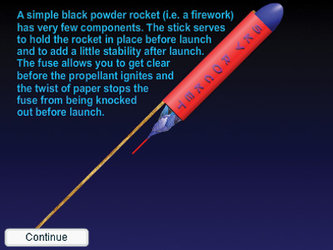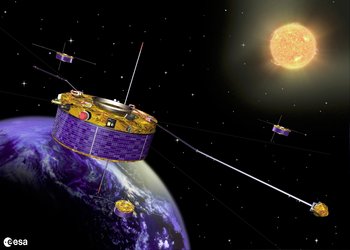Solar sails
or The light fantastic

If you are going to rely on the Sun for your power supply and only take inert propellant with you then why not go all the way and rely on the Sun for your propellant too? The only requirement of Newton’s third law is that something has its momentum changed. For example in a sailing boat the wind is really made up of countless gas particles all moving in roughly the same direction. When they hit the sail they bounce of and start to move in another direction. This change of momentum for the wind produces a corresponding change of momentum for the boat and this drives it forward.
Light is also made up of countless particles called photons, each of which has its own momentum. Each photon has an energy E and travels at the speed of light, c. It also has a momentum p, given by:

If these photons are forced to change direction then their momentum must change and the easiest way to do this is to use a mirror. However, glass mirrors are very heavy and the solar radiation pressure is very small, only 4.7 x 10-6 N m-2 at the Earth's orbit. This means that practical solar sails will have to be made very large, hundreds of metres if not kilometres across, and so of very lightweight materials. One current solution uses a metallised plastic film around 2 μm thick (about 4% of the thickness of an ‘average’ human hair).
Using solar sails would allow spacecraft to be made much lighter and so be able to carry larger payloads. Like traditional sailing boats, solar sails do not have to just ‘run with the wind’, they can change course by tilting the sail or even tack in to the wind and so head sunwards. One proposal by ESA is for a 'sample return mission' to Mercury, the hardest planet to reach in the solar system if you are using traditional rocket motors. They would even make it practicable to carry out missions that are impossible with traditional propulsion systems, for example orbiting constantly over the pole of the Sun to carry out scientific research, or even hovering over the Earth's poles to act as a polar communications 'satellite'. Solar sails could also be used to power a mission to the very edge of the solar system far faster than any other known technology.











